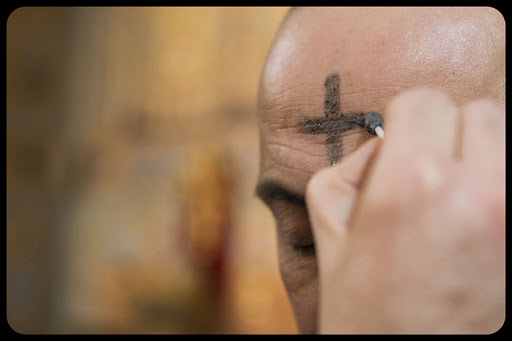Ash Wednesday, in the liturgical tradition of the Church, is called the "beginning of Wednesday fasting" (in capite ieiunii). It begins with the austere rite of the imposition of ashes, and thus opens Lent. Lent represents, in the liturgical year, the preparation for celebrating the mystery of the Passion, Death and Resurrection of Christ.
Ash Wednesday is closely linked with the idea of penance, already expressed among the Hebrews by covering one’s head with ashes and dressing in rough sackcloth.
Judith, before undertaking the arduous task of freeing Bethulia, "fell prostrate, put ashes upon her head, and uncovered the sackcloth she was wearing. Just as the evening incense was being offered in the temple of God in Jerusalem, Judith cried loudly to the Lord: (Jud 9: 1).
Jesus himself, deploring the impenitence of the cities of Chorazin and Bethsaida, said that they deserved the same purpose as Tyre and Sidon. “Woe to you, Chorazin! Woe to you, Bethsaida! For if the mighty deeds done in your midst had been done in Tyre and Sidon, they would long ago have repented in sackcloth and ashes." (Mt 11, 21).
This is why Tertullian, Cyprian, Ambrose, Jerome, and other Fathers and ancient Christian writers often refer to penance in sackcloth and ashes; and, when in the fifth and sixth and centuries the Church organized a "public penance,” it chose the ash and the sack for the punishment of those who had committed serious and egregious sins.
The canonical penance period began on that day and lasted until Holy Thursday. In Rome in the seventh century, the penitents presented themselves to the priests, made a confession of their sins, and if necessary, received a dress of sackcloth impregnated with ash. They were not allowed to come to church and were asked to go to an abbey to fulfill the penance imposed on them that Lent. Elsewhere, public penitents carried out their penance privately, at home.
It was generally the custom to begin Lent with a confession, not only to purify the soul, but also to receive Holy Communion more frequently. The confession of sins was always oriented around "communion with the altar.” Its purpose was to gain access to the Eucharistic Sacrament, as the Church’s life is in the Eucharist.
The first occasion of the blessing of ashes dates from the eleventh century. The rite of placing ashes on the head of the penitent, a great symbolic gesture, spread rapidly throughout Europe. The ashes, which come from the burning of olive branches on Palm Sunday the previous year, were placed on the heads of men. Women had a cross drawn upon on the forehead.
This article was published on the Spanish edition of Aleteia.

